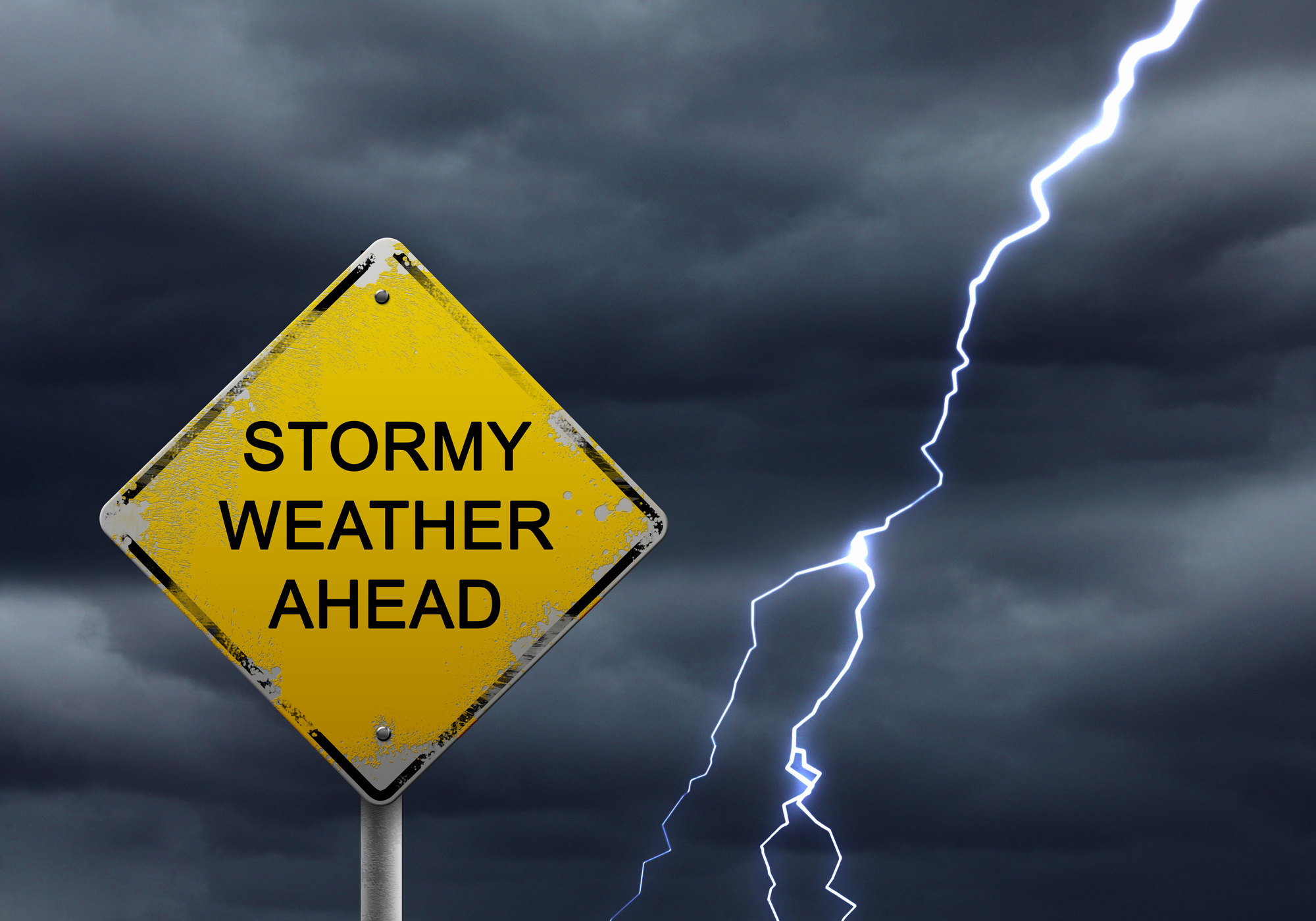Fortify Your Company to Withstand a Hurricane
Is Your Business Prepared for a Storm?
Storm warning ahead sign during a thunderstorm.
Your human resources officer is key to your emergency preparations and can mean the difference between your business recovering from a natural disaster such as a fire or a hurricane. Hurricane Lee, a menacing Category 4 storm, looms on the horizon, posing a significant threat to the state of Florida in the next few days. For business owners and managers in the Sunshine State, and indeed for entrepreneurs across hurricane-prone regions worldwide, the imminent danger serves as a stark reminder of the critical importance of emergency preparedness. Is your company ready to weather a storm?
Why Preparedness Matters
Natural disasters, such as hurricanes, can wreak havoc on businesses, leading to financial losses, disrupted operations, and even permanent closures. According to the Federal Emergency Management Agency (FEMA), 40% of small businesses never reopen after a disaster. To prevent your company from becoming another statistic, it's crucial to fortify your business against the fury of Mother Nature.
1. Develop a Comprehensive Disaster Plan (also called a Disaster Recovery Plan)
The first step in preparing your business for a hurricane is to create a comprehensive disaster plan. This plan should outline specific actions to take before, during, and after a hurricane, ensuring everyone in your organization knows their responsibilities. Key components of your plan should include:
Evacuation Procedures: Establish clear evacuation routes and assembly points for your employees. Ensure that everyone understands when and how to evacuate safely. Some organizations go as far as evacuating several of their key employees to safer locations away from the path of a dangerous storm.
Communication Plan: Create a reliable communication strategy to keep your team informed during the storm. Invest in backup communication tools, such as satellite phones or walkie-talkies, as cell phone networks may fail.
Emergency Contacts: Compile a list of essential contacts, including local emergency services, suppliers, and key employees. Make sure this list is easily accessible to all staff members. Ensure your human resources officer instructs all of your employees to verify and, if needed, update their emergency contact information in their database.
Data Backup and Recovery: Regularly back up your critical business data and store it in a secure off-site location. Implement a plan for data recovery in case of loss or damage.
2. Secure Your Physical Assets
Protecting your physical assets is paramount during a hurricane. Here are some steps to fortify your business premises:
Board Up Windows and Doors: Install hurricane shutters or plywood to safeguard windows and doors from flying debris.
Anchor Equipment: Secure heavy equipment and machinery to prevent them from becoming dangerous projectiles during high winds.
Elevate Inventory: If possible, store inventory and important equipment above potential flood levels.
Install Generators: Invest in backup generators to ensure your business remains operational, especially if you rely on power for essential functions.
3. Review and Update Insurance Policies
Insurance is a crucial component of disaster preparedness. Review your business insurance policies, including property, liability, and business interruption coverage. Ensure you have adequate coverage to mitigate potential financial losses. It's also wise to explore flood insurance, as standard policies typically do not cover flood damage.
4. Build Resilience Through Cross-Training
Cross-training your employees in various roles can help ensure that essential tasks continue even if key personnel are unavailable during or after a hurricane. By expanding your team's skillset, you reduce the risk of operational disruptions.
5. Stock Up on Emergency Supplies
In addition to protecting your business, you must also take care of your employees. Stock up on emergency supplies such as food, water, first-aid kits, and other essentials to sustain your staff during the storm and its aftermath. Consider providing a safe area within your facility where employees can take shelter if necessary.
6. Test Your Plan Regularly
A disaster plan is only as effective as its execution. Regularly test your plan through drills and simulations to identify weaknesses and make necessary improvements. Ensure all employees are familiar with emergency procedures.
7. Stay Informed
Monitor weather updates and local authorities' instructions closely. Maintain open lines of communication with employees, customers, and suppliers. Consider appointing an employee as a dedicated emergency coordinator to oversee communication efforts and keep everyone informed.
8. Network and Collaborate
Don't go it alone. Collaborate with neighboring businesses and form a disaster preparedness network. Sharing resources and knowledge can strengthen your collective ability to withstand a hurricane's impact.
9. Consider Remote Work Solutions
In today's digital age, remote work is a viable option for many businesses during emergencies. Implement remote work solutions and ensure your employees have access to the necessary tools and data from off-site locations.
10. After the Storm: Assess and Rebuild
Once the storm has passed and it's safe to return to your business premises, assess the damage and prioritize recovery efforts. Keep detailed records of all damage and expenses for insurance claims. Rebuilding may take time, but with a solid plan and a resilient attitude, your business can recover and emerge stronger.
Conclusion
In the face of Hurricane Lee's impending threat, and the ever-present risk of natural disasters, businesses in hurricane-prone regions must prioritize disaster preparedness. A comprehensive disaster plan, physical asset protection, insurance coverage, and a resilient team are essential components of weathering the storm.
Remember, being prepared is not just about protecting your business; it's also about safeguarding the livelihoods of your employees and the well-being of your community. By fortifying your company to withstand a hurricane, you're not only ensuring its survival but also contributing to the resilience of the entire region.
Stay safe, stay prepared, and together, we can weather any storm that comes our way.

